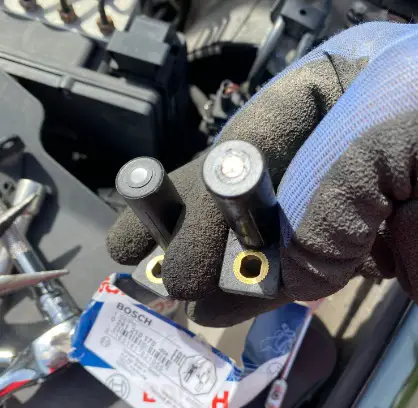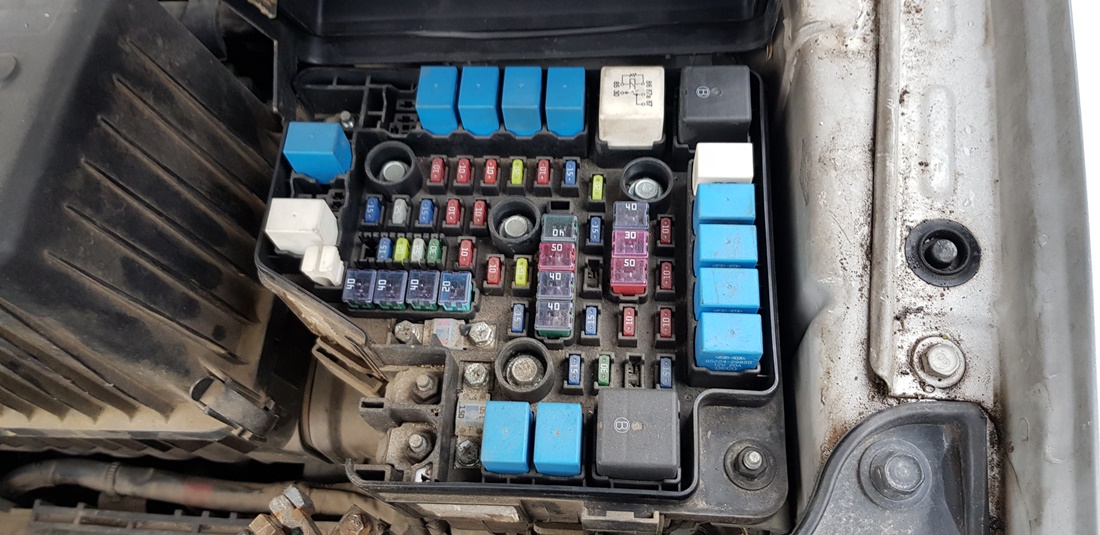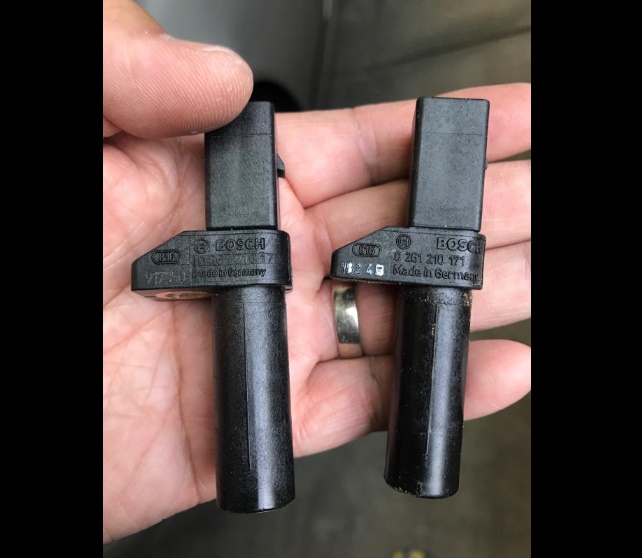Have you ever tried starting your car and it just wouldn’t turn over no matter how many times you hit the gas? You might have assumed your battery was dead, but in reality, it’s fine. There could be other causes why your vehicle won’t start even with a functioning battery, including:
In this blog post, we’ll look at seven potential causes of a car being completely dead even though its battery remains healthy.
If your car’s battery appears to be fully charged but the electrical system appears to be malfunctioning, this may indicate a blown fuse, loose battery terminal, faulty wiring, an alternator that won’t start, an ignition switch that won’t engage, and corrosion in the wiring.
Key Takeaway
- A car can be completely dead despite having a good battery due to various reasons, such as a weak voltage regulator or failing alternator, starter motor issues, fuel system problems, or a blown fuse.
- Fixing a car that is dead but has a good battery can be achieved by checking and potentially replacing the ignition system, starter motor, or alternator, and inspecting for any electrical issues such as blown fuses or damaged wiring.
- Preventing a car from dying involves regular driving to maintain the battery’s health, diligent cleaning and disconnecting of the battery when not in use, and using a battery charger to prevent battery drain.
Car Is Completely Dead But The Battery Is Good

When your vehicle won’t start after trying to start it, the likely cause is a dead battery. But what else could cause a car to be completely dead if its battery appears to be functioning normally?
Here are seven potential explanations why your car might still be unresponsive even with its working battery:
1. Blown fuse

If your car’s battery is charging properly and the engine still won’t start, one possible cause could be a blown fuse. Fuse supplies power to many of the car’s electrical components; if one blows, all will be lost.
In a vehicle, the purpose of a fuse is to safeguard its wiring. As electrical current passes through wires, heat is generated; if too much current passes through them, they could overheat and start a fire.
A fuse must be installed between the power source and load so that if the current passing through becomes excessively high, it will “blow,” meaning opens up and breaks the circuit.
Fuses are designed to prevent too much current from reaching the load and damaging it. Fuses are rated according to how much current they can safely handle; for instance, a 30-amp fuse is commonly used in vehicles; this indicates it can safely handle up to 30 amps before needing replacement.
The main fuse that should be checked is for ignition; it supplies power to this system and if blown, will prevent the starting of the engine. Other possible culprits include fuel pump and ECU fuse failure.
Fuse blowouts can be caused by a number of reasons, such as a loose wire or short circuit. If you suspect your car’s fuse has blown, the first step should be checking the fuse box for any signs of damage.
If there are any burned-out fuses present, replace them with new ones to avoid further issues.
- See also: What Does A Blown 30 Amp Fuse Look Like (With Pictures)
- See also: What Does a Blown 40 Amp Fuse Look Like (With Pictures)
- Read also: What Does a Blown 50 Amp Fuse Look Like (With Pictures)
2. Loose battery terminal

One common reason a car may appear to be dead but its battery still functions is due to a loose battery terminal.
In order for a car’s battery to function optimally, it must be connected to its electrical system via positive and negative terminals. The positive terminal is typically marked with a plus sign, while the negative one typically bears a minus sign.
These terminals create an electrical path between the battery and the electrical system.
The positive terminal of a battery is connected to the car’s voltage regulator, while the negative one is to its engine block. For the proper functioning of the electrical system, it is essential that both terminals be kept clean and free from corrosion.
Proper connections between the terminals and your battery ensure reliable performance; if they’re loose, you could experience all kinds of electrical issues. In some cases, you may even be able to tighten it yourself for convenience.
With exposure to moisture and chemicals, battery terminals can corrode. When this happens, it can obstruct the flow of electricity and lead to starting issues.
3. Faulty wiring

There are many reasons a car might not start even with a full battery. One potential cause could be wiring issues.
Wiring issues can prevent the electrical system from functioning correctly, leading to various issues including not being able to start your vehicle.
When you turn the key in the ignition of your car, you expect it to start right away. But if the engine won’t turn over, there could be an underlying issue with the wiring.
Defective wiring can lead to all sorts of issues – from failing to start up to causing headlights to flicker.
4. Bad alternator

A car’s alternator is responsible for charging the battery and powering its electrical system while the engine runs. If this component fails, eventually, the battery will run out of juice – leaving your car useless.
Even if it appears that your battery is working fine, it may simply not be getting charged enough to maintain optimal performance.
There are a variety of reasons why an alternator may malfunction, but one of the most frequent is simply age. As these devices age, their components become worn out and less efficient at their job.
Old alternators can sometimes be repaired, but in other cases, they must be replaced. Either way, having a dead car is an inconvenience so be aware of the warning signs of a failing alternator.
If your dashboard lights start flickering or dimming, that could be a sign that your alternator may need replacing soon.
5. Faulty starter

Starting a car seems straightforward enough – just turn the key and watch as your engine comes to life! But have you ever stopped to consider what actually takes place when you turn that key? To truly comprehend how a car starter works, it helps to have some basic knowledge of how an engine operates.
An engine relies on a series of small explosions to generate power. These are caused by fuel-air mixtures igniting in the cylinders. To ignite them, the cylinders must first be filled with this mixture and then ignited – that’s where your car starter comes in handy!
Once you turn the key, the starter motor is activated. It has a small gear that meshes with another larger gear on the engine, and this rotation turns both gears and causes rotation of the crankshaft – connected to pistons in each cylinder.
As your car spins, it draws in air and fuel into its cylinders. Once all of these cylinders are full of gasoline-air mixture, sparks from the ignition system cause an explosion within each cylinder – driving pistons down so your crankshaft turns and powers your car.
When a car won’t start, it may be due to an issue with its battery. But if everything appears fine and still won’t turn over, then the issue could lie with the starter. This device is responsible for getting your engine going; if it isn’t functioning correctly, your car won’t begin.
6. Faulty ignition switch

When an ignition switch malfunctions, it can prevent your engine from starting even if its battery is charged. In most cases, this issue is due to wear and tear but could also be due to an electrical short or manufacturing defect.
The ignition switch in a car is responsible for providing power to the engine starter motor. When turned, this engages the flywheel, starting up the engine. Furthermore, it powers other accessories like headlights, radio, and windshield wipers.
In most cars, the ignition switch is located on the steering column just beneath the steering wheel. On some models, however, you may find an ignition switch located under the dash near where you sit while steering.
Replacing an ignition switch is usually a relatively straightforward procedure, but it’s essential that the work be carried out by an experienced mechanic says Cash Car Buyers.
7. Corroded wiring

When your car won’t start, it can be frustrating and even terrifying. Many potential causes exist for this problem, but one of the most frequent is simply corroded wiring.
Over time, metal in electrical wires may corrode away, leading to decreased conductivity.
Damage to engine wiring may prevent electricity from reaching the engine, leading to a malfunction. In some cases, repairs may be possible on affected wires; however, if corrosion is widespread, replacing all wiring may be necessary.
Corroded wiring can also be caused by corrosion on the battery terminals. Battery terminals can corrode for various reasons; one common cause being exposure to elements. When this occurs, your car won’t start properly.
Over time, battery terminals can become coated in dirt and grime, which eventually leads to corrosion.
Another reason corrosion may occur is due to sulfate crystals buildup – crystals formed when the battery isn’t charged properly – that attach themselves to the terminals and cause further harm.
There are a few ways to prevent corrosion on battery terminals. First and foremost, ensure the batteries remain clean; any dirt or grime on them could act as a conductor and accelerate corrosion.
Furthermore, using a terminal protector is beneficial as this product creates an invisible barrier between the metal and corrosive materials.
Lastly, regularly checking the terminals for corrosion should be done; any existing corrosion should then be cleaned away quickly and thoroughly.
How To Fix a Car That Is Dead But Has a Good Battery
Fixing a car that is dead but has a good battery often involves checking and addressing issues with the ignition system, starter motor, alternator, or other electrical components.
Check the Ignition System
The ignition system is responsible for starting the engine. If this system is faulty, your car might not start despite having a good battery. Look for signs of wear or damage in the ignition switch, ignition coil, or spark plugs.
If you find any issues, replacements may be necessary. From my experience as a mechanic, I’ve seen many cases where a simple replacement of a worn-out spark plug brought a seemingly dead car back to life.
Inspect the Starter Motor
The starter motor plays a crucial role in starting the engine. If it’s faulty or damaged, it might not be able to perform its function, leading to a dead car. Listen for a clicking sound when you try to start the car; this could indicate a problem with the starter motor. Sometimes, a gentle tap on the starter motor can get it working again, but if the problem persists, it may need to be replaced.
Examine the Alternator
The alternator charges the battery while the car is running. If it’s not working correctly, the battery will not recharge, and the car might not start. A common sign of a failing alternator is dimming headlights or interior lights. If you suspect an issue with the alternator, it’s best to have it checked and replaced if necessary.
Check for Electrical Issues
Other electrical issues, such as blown fuses or damaged wiring, can also prevent your car from starting. Check the car’s fuses and replace any that are blown. Inspect the wiring for signs of damage, like fraying or corrosion, and repair or replace as needed.
How To Prevent a Car From Dying
Preventing a car from dying involves maintaining the health of the battery by regularly driving the vehicle, cleaning and disconnecting the battery when not in use, and using a battery charger.
Regular Driving
Regularly driving your car is one of the easiest ways to keep the battery healthy and prevent it from dying. This is because the alternator charges the battery while the car is running, which helps maintain its charge.
Aim to drive your vehicle at least once a week for about 30 minutes at highway speeds. In my years as a mechanic, I’ve seen many cases where infrequent use led to battery drain, so this is a simple but effective step.
Battery Maintenance
Keeping the battery clean is another crucial aspect of preventing a car from dying. Corrosion on the battery terminals can interfere with the battery’s ability to hold a charge.
Regularly inspect the battery terminals and clean them if you notice any signs of corrosion. Moreover, if you plan to leave your car unused for an extended period, consider disconnecting the battery to prevent parasitic drains that can deplete the battery.
Use a Battery Charger
Investing in a battery charger can be a great way to maintain the health of your car battery, especially if your car is often left unused for extended periods. A battery charger can help keep the battery from draining and is particularly useful if you don’t drive your car frequently.
I’ve recommended battery chargers to many customers who store their vehicles during the winter months, and they’ve found it to be a worthwhile investment says Bridgestone Tire.
FAQs
Q: How can I determine if my battery is truly in good condition?
A: To determine if your battery is in good condition, you can perform a battery load test. This test involves using a battery tester to assess the battery’s ability to hold a charge and deliver power. If the battery fails the load test, it may need to be replaced, even if it appears to be in good physical condition.
Q: What are some signs of a bad starter motor?
A: Some signs of a bad starter motor include a clicking sound when you turn the key, a grinding noise, slow or hesitant engine cranking, or the engine not starting at all. If you suspect a faulty starter motor, it is recommended to have it inspected and replaced by a professional mechanic.
Q: Can a faulty ignition switch cause the car to be completely dead?
A: Yes, a faulty ignition switch can cause the car to be completely dead. The ignition switch is responsible for initiating the starting process by sending electrical signals to various components. If the ignition switch fails, the car may not receive the necessary power to start.
Q: What should I do if my car is completely dead but the battery is good?
A: If your car is completely dead but the battery is good, you may try jump-starting the vehicle using jumper cables and another vehicle with a working battery. If jump-starting does not work, it is recommended to have your car inspected by a professional mechanic to identify and resolve the underlying issue.
Q: How can I diagnose a problem with the fuel system?
A: To diagnose a problem with the fuel system, you can check for common signs such as the smell of gasoline, a sputtering engine, or a lack of fuel pressure. Additionally, you can use a fuel pressure gauge to measure the pressure in the fuel system and determine if it is within the recommended range.
Q: Why is it important to check for broken or loose connections?
A: Broken or loose connections can disrupt the flow of electricity and prevent the car from starting. By checking for broken or loose connections, you can ensure that all the electrical components are properly connected and functioning, and if necessary, repair or replace any damaged wiring.
Q: Can a failed alternator cause the car to be completely dead?
A: Yes, a failed alternator can cause the car to be completely dead. The alternator is responsible for charging the battery while the engine is running. If the alternator fails, the battery may not receive the necessary charge, resulting in a dead car.
Q: Should I attempt to fix the issue myself or seek professional help?
A: The complexity of diagnosing and fixing the issue depends on the underlying cause. If you are experienced with car repairs and have the necessary tools, you may attempt to fix the issue yourself. However, if you are unsure or uncomfortable with the process, it is recommended to seek professional help from a qualified mechanic. They will have the expertise and diagnostic equipment to accurately identify and resolve the problem.
Conclusion and final thoughts
In conclusion, it is important to remember that a car being completely dead does not necessarily mean that the battery is also dead.
There are various factors to consider when diagnosing a car’s issues and it is always best to consult a professional mechanic for an accurate assessment.




